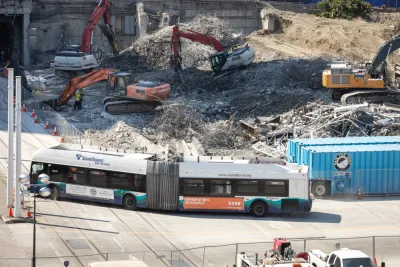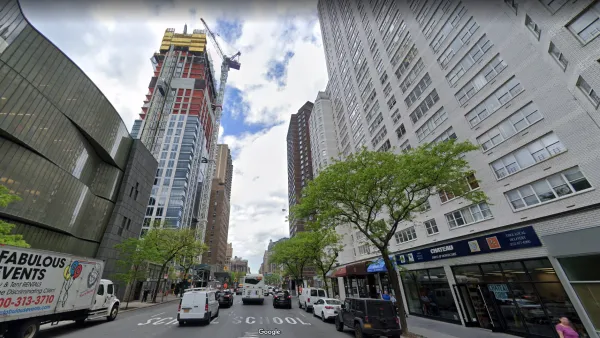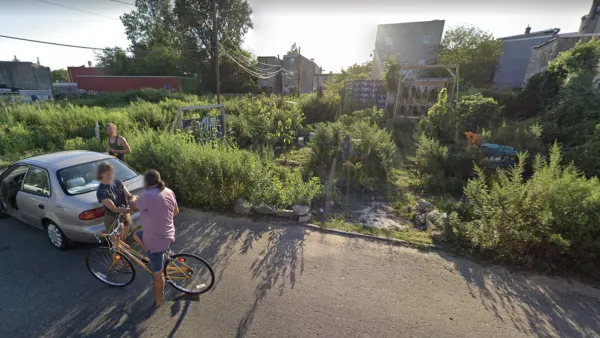Demolition can be a lot of fun for the people holding the sledge hammers and swinging the wrecking balls, but demolition is serious business with a large number of significant social and environmental consequences.

The demolition of any structure creates significant opportunities for unintended consequences and serious safety issues, both during and after the process.
As a result, there are multiple legal standards that urban planners, developers, and demolition companies must follow. They must be aware of best practices and other considerations when planning how a site's demolition and future development will be handled.
1. Dangerous Building Materials
Older structures can contain dangerous building materials like lead and asbestos, which will need to be identified and removed before demolition of a building.
When left in place, these materials can easily pose a serious health risk to both workers and residents. If a building is known or suspected to contain dangerous substances, a qualified individual should inspect the site before demolition, remediation, or cleanup of the structure.
If the inspector identifies dangerous materials, they will typically need to be removed in accordance with federal and state regulations. In Georgia, for example, only licensed asbestos abatement contractors can remove certain asbestos-containing materials, such as vinyl products.
2. Falls and Site Safety
There are some inherent dangers to demolition. Falls and struck-by hazards are two of OSHA's "fatal four" — the most common types of accidents on construction sites — and can easily cause serious injury or death.
Sites can be made safer by following all necessary and relevant safety precautions—like the OSHA demolition standards.
Preparing for falls and ensuring the use of best-practice safety measures can also help reduce the risk of injury or death. It's vital to brace ceilings and walkways, install safety nets, stock all necessary safety equipment and perform a final sweep before demolition.
3. Dust and Debris Control
Demolition produces large amounts of dust and debris. Both can be dangerous to the health of workers on-site and nearby residents, and can also damage neighboring structures.
Cities also often require that all debris is removed from the site once demolition is complete.
Controlling for dust and debris is essential in keeping structure demolition as safe as possible. Fencing, screening and shielding can control debris, while water and mulch, among other things, can control dust.
4. Plumbing Management
In many locales, structures will need to be effectively removed from the local water supply network before they can be approved for demolition.
This may require a sewer cap or the decommissioning of a septic tank. Typically, a master plumber is needed to verify that the building has been disconnected from the sewer and water supply lines.
5. The Social Impact of Demolition
Overzealous, demolition-only urban policies can have serious negative impacts on a city's residents and economy.
In residential areas, for example, vacant lots are known to drag down surrounding property values and socially isolate residents. Without a plan in place for how the lot will be developed after demolition, the process can leave the area worse off than it was before.
Demolition can also run against historic and cultural preservation efforts. In some areas, tearing down buildings in historic districts may require special permits or a notice period that can slow down the process. In New York City, for example, developers wanting to demolish buildings designated as landmarks need permission from the Landmarks Preservation Commission.
When demolishing historic structures, urban planners should consider incentives for keeping the property standing, such as the 20% tax credit for rehabilitating properties on the National Register of Historic Places. This may be more appealing to investors than a new property or vacant lot.
6. The Environmental Impact of Demolition
Vacant lots can also have significant negative environmental impacts. Typically, the soil quality and composition created by demolition prevents rainwater from soaking into the ground. As a result, these lots can produce high amounts of stormwater runoff.
This runoff usually flows toward streams and other water sources, picking up pollutants from streets, yards and sidewalks as it moves. Over time, this can negatively impact local water health and reduce sewer capacity.
With the right planning, however, these impacts can be mitigated—and vacant lots can even become an environmental positive. By preparing lots after demolition, it's possible to make the soil much more rainwater-absorbent. If the lot goes undeveloped, it will function as a storage for rainwater, reducing local runoff and straining the sewer system.
How to Ensure Demolitions Work Safely
Building demolitions can be a messy process that generates many serious knock-on effects. Poorly planned demolitions can injure site workers, cause severe environmental and social impacts, and may even cause legal trouble.
With the proper planning, it's possible to mitigate or eliminate many of these risks. Developers and planners who need to demolish a structure in the future should take these risks into consideration to ensure demolition goes as smoothly as possible.

National Parks Layoffs Will Cause Communities to Lose Billions
Thousands of essential park workers were laid off this week, just before the busy spring break season.

Retro-silient?: America’s First “Eco-burb,” The Woodlands Turns 50
A master-planned community north of Houston offers lessons on green infrastructure and resilient design, but falls short of its founder’s lofty affordability and walkability goals.

Delivering for America Plan Will Downgrade Mail Service in at Least 49.5 Percent of Zip Codes
Republican and Democrat lawmakers criticize the plan for its disproportionate negative impact on rural communities.

Test News Post 1
This is a summary

Test News Headline 46
Test for the image on the front page.

Balancing Bombs and Butterflies: How the National Guard Protects a Rare Species
The National Guard at Fort Indiantown Gap uses GIS technology and land management strategies to balance military training with conservation efforts, ensuring the survival of the rare eastern regal fritillary butterfly.
Urban Design for Planners 1: Software Tools
This six-course series explores essential urban design concepts using open source software and equips planners with the tools they need to participate fully in the urban design process.
Planning for Universal Design
Learn the tools for implementing Universal Design in planning regulations.
EMC Planning Group, Inc.
Planetizen
Planetizen
Mpact (formerly Rail~Volution)
Great Falls Development Authority, Inc.
HUDs Office of Policy Development and Research
NYU Wagner Graduate School of Public Service






























